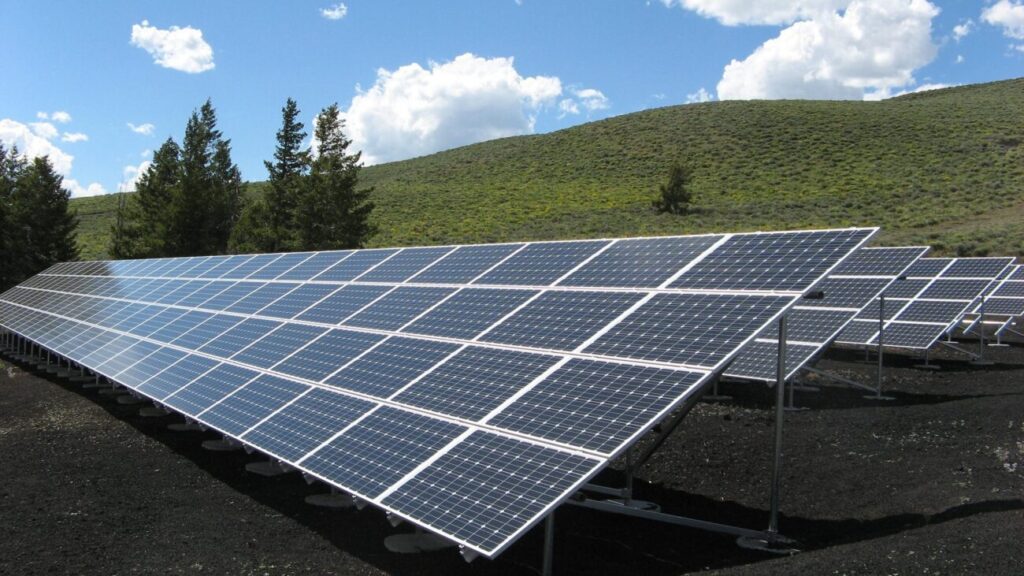A Key Element In Solar Panels – Efficiency
Solar energy is abundant, sustainable and emits no greenhouse gases, making it an attractive option for both residential and commercial use.
However, the effectiveness of solar panels in converting sunlight into electricity remains a critical factor in their widespread adoption.
Efficiency is a key element of solar panel technology as it determines the amount of sunlight that can be converted into usable electricity. The higher the efficiency rating, the more power is generated from a given surface area of solar panels. As such, manufacturers are continuously improving their designs to maximize efficiency and reduce costs for consumers.

What solar panel efficiency is?
In simple terms, solar panel efficiency is the measure of how effectively a solar panel can convert sunlight into usable electricity. It is typically expressed as a percentage and indicates the amount of energy that can be produced from a certain amount of sunlight. The higher the efficiency rating, the more power output you can expect from your solar panels.
Efficiency is an important factor to consider when choosing solar panels for your home or business. It determines the size and number of panels needed to generate enough electricity to meet your needs. High-efficiency panels are ideal if you have limited space or want to maximize energy production in areas with lower levels of sunlight.
Factors that affect solar panel efficiency include temperature, shading, and module design. It’s important to work with an experienced installer who can help you choose the right type of panels for your specific situation and ensure that they are installed in a way that maximizes their performance. By understanding what solar panel efficiency means, you can make informed decisions about your investment in renewable energy technology.
How Efficiency Is Measured?
Efficiency is a crucial element in the performance of solar panels. It determines how much energy a panel can produce relative to the amount of sunlight it receives. There are several methods used to measure efficiency, and they differ depending on the type of solar cells being evaluated.
One common method for measuring efficiency is the photovoltaic (PV) conversion rate. This measures how much electrical energy a solar cell generates per unit area when exposed to sunlight. Another method involves evaluating the fill factor, which measures how well a cell converts light into electricity by examining its voltage and current output about its maximum power point.
Additionally, researchers may use external quantum efficiency (EQE) as another method for assessing cell performance. EQE measures how many photons that hit the surface of a cell are converted into electric charges, offering insight into where energy losses may occur within a system.
Factors Affecting Efficiency
Factors affecting solar panel efficiency are numerous, and each one plays a significant role in determining the energy output of each panel. One of the primary factors is temperature; as temperatures rise, so does the resistance in solar cells, leading to lower outputs. Additionally, shading can significantly impact efficiency as it reduces the amount of sunlight that reaches the panel. As a result, even partial shading can decrease overall energy production.
Another critical factor is degradation over time due to environmental elements like ultraviolet (UV) light and moisture. These factors cause damage to components within solar panels such as corrosion or delamination of materials used in manufacturing. Finally, the orientation and tilt angle of solar panels have an impact on their efficiency levels too. An optimal alignment with respect to latitude ensures maximum sun exposure throughout the day.
Techniques for increasing solar panel efficiency
Efficiency is an important element in solar panel performance, as it directly influences the amount of energy generated from sunshine. One way for enhancing efficiency is to employ high-efficiency solar cells that have higher conversion rates than standard cells. These advanced solar cells can attain an efficiency of up to 24%, compared to 15-20% for ordinary panels.
Another strategy involves altering the angle and direction of the solar panels to maximize exposure to sunlight. This can be achieved by correct installation and tracking devices that alter the angle of the panels throughout the day based on solar movement. Additionally, regular maintenance such as removing dust and dirt from panel surfaces can boost efficiency by letting more light reach the cells.
Overall, improving efficiency in solar panels requires a combination of advanced technology and proper installation and maintenance practices. By implementing these techniques, users can generate more energy from their systems while reducing their environmental impact.

